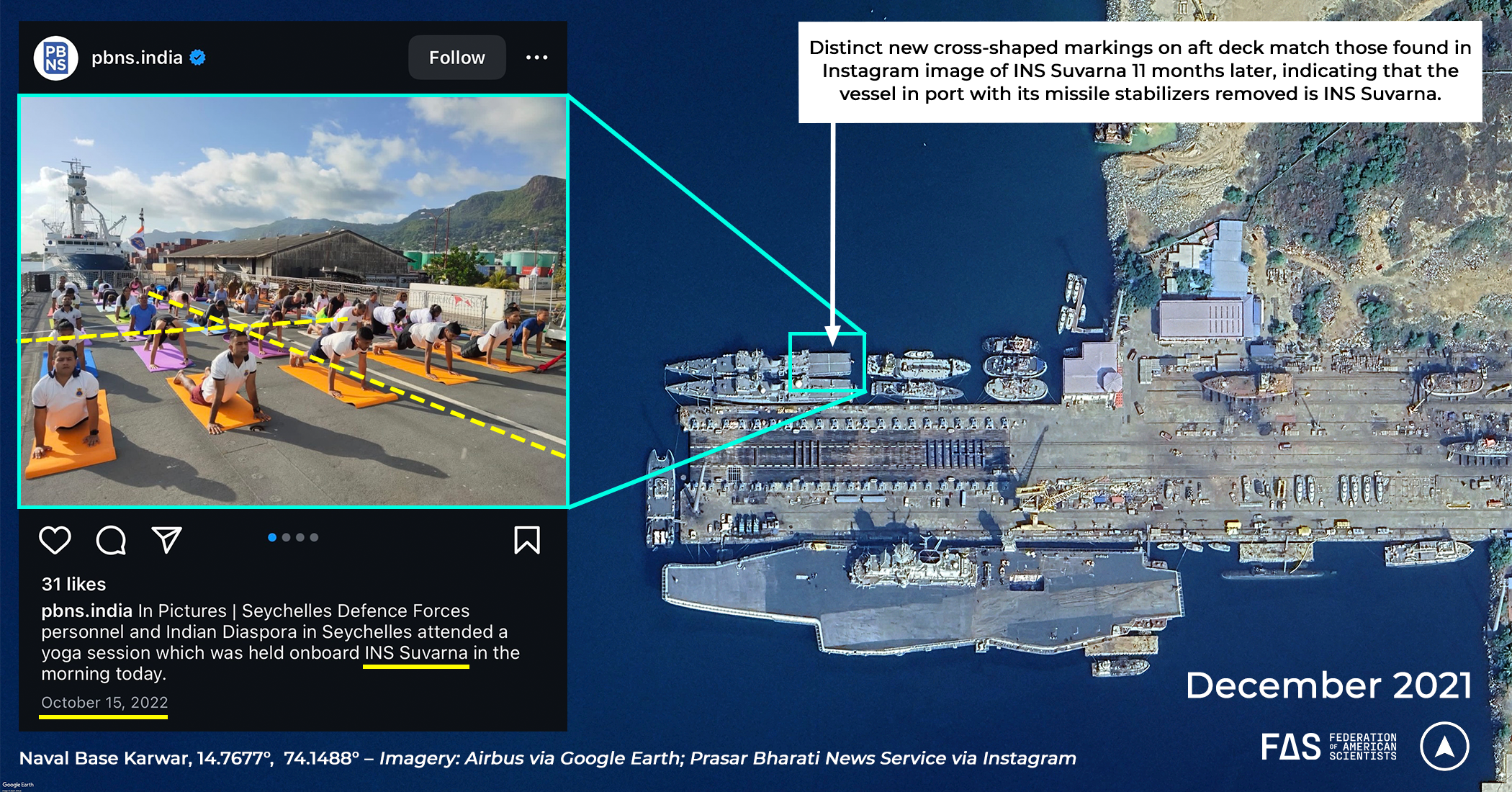
Hot-Launch Yoga: Cobra Pose Reveals Nuke Repose
The Indian Navy has integrated yoga into its training practices for decades, and in recent years it has conducted yoga sessions onboard its warships during port visits as a form of cultural diplomacy. These events, and the social media posts documenting them, occasionally offer fascinating data points about the status of specific military capabilities.
In particular, yoga-related social media posts and satellite imagery now indicate that one of India’s oldest naval missiles capable of launching nuclear weapons has likely been retired as the country continues to develop its sea-based nuclear deterrent.
For nearly 15 years, India’s naval nuclear forces solely consisted of two offshore patrol vessels that had been specially configured to launch nuclear-capable Dhanush missiles.
The Dhanush––a variant of India’s Prithvi short-range ballistic missile––had always been somewhat of an odd capability for India’s navy. Given its relatively short range and liquid-fuel design––meaning that it would need to be fueled immediately prior to launch––the Dhanush’s utility as a strategic deterrence weapon was severely limited. The ships carrying these missiles would have to sail dangerously close to the Pakistani or Chinese coasts to target facilities in those countries, making them highly vulnerable to counterattack.
For those reasons, we have continuously assessed that as India’s long-planned nuclear-powered ballistic missile submarines become operational, the Dhanush would eventually be phased out.
New data points from social media and satellite imagery indicate it is very likely that this has now happened.
––
For years, India’s nuclear-capable Dhanush missiles were carried by two specially configured Sukanya-class offshore patrol vessels, known as INS Subhadra (hull number P51) and INS Suvarna (P52). These two vessels have been most clearly distinguishable from India’s four other Sukanya-class patrol vessels by the presence of missile stabilizer platforms on their aft decks that could be clearly seen through satellite imagery, including in this image from April 2018.
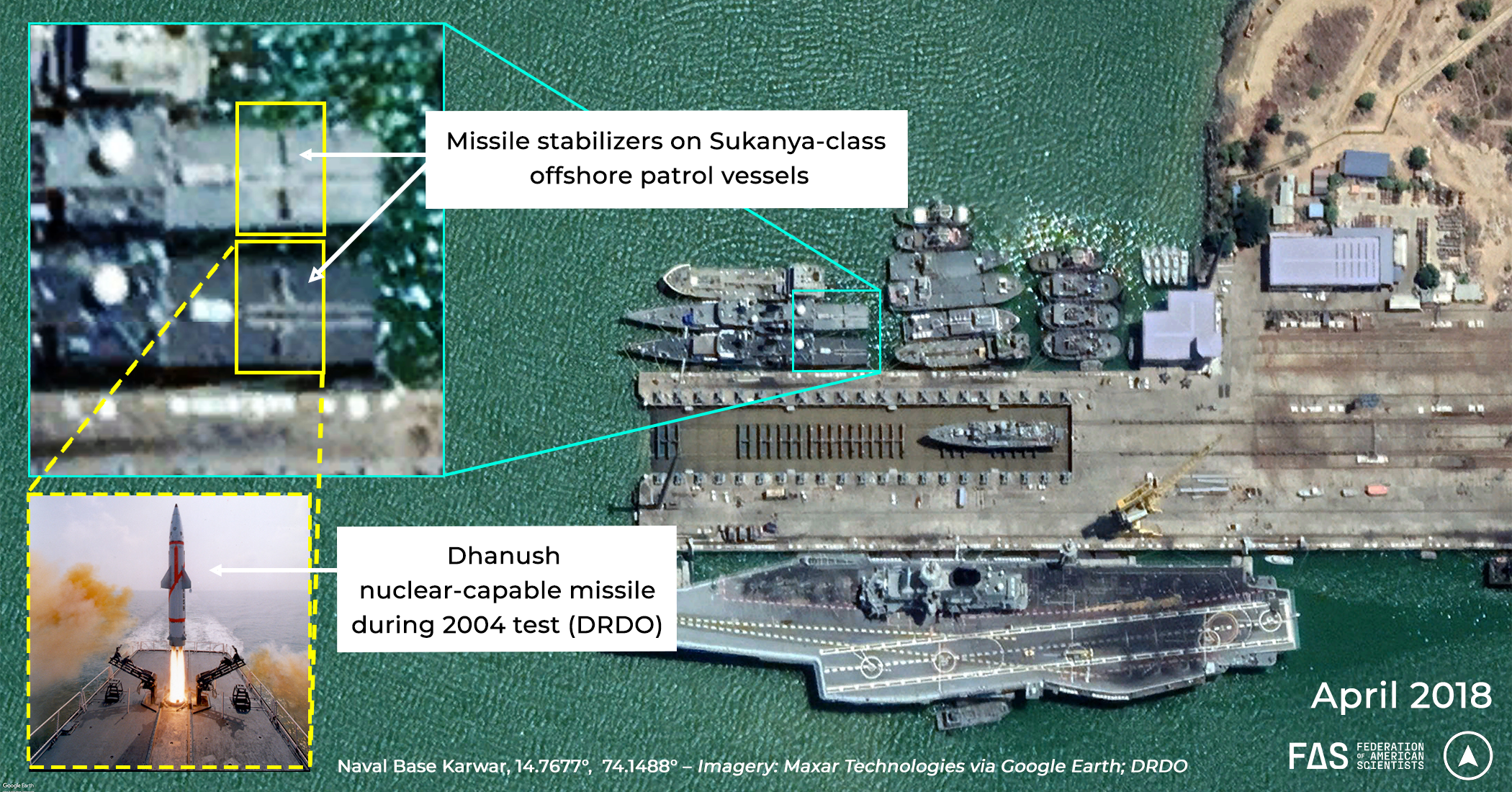
The last time that any official Indian source had indicated that the Dhanush capability was still operational was in 2019, when two Facebook posts by the Indian Navy’s official page specifically mentioned the capability and implied that it was still active on both INS Subhadra and INS Suvarna.
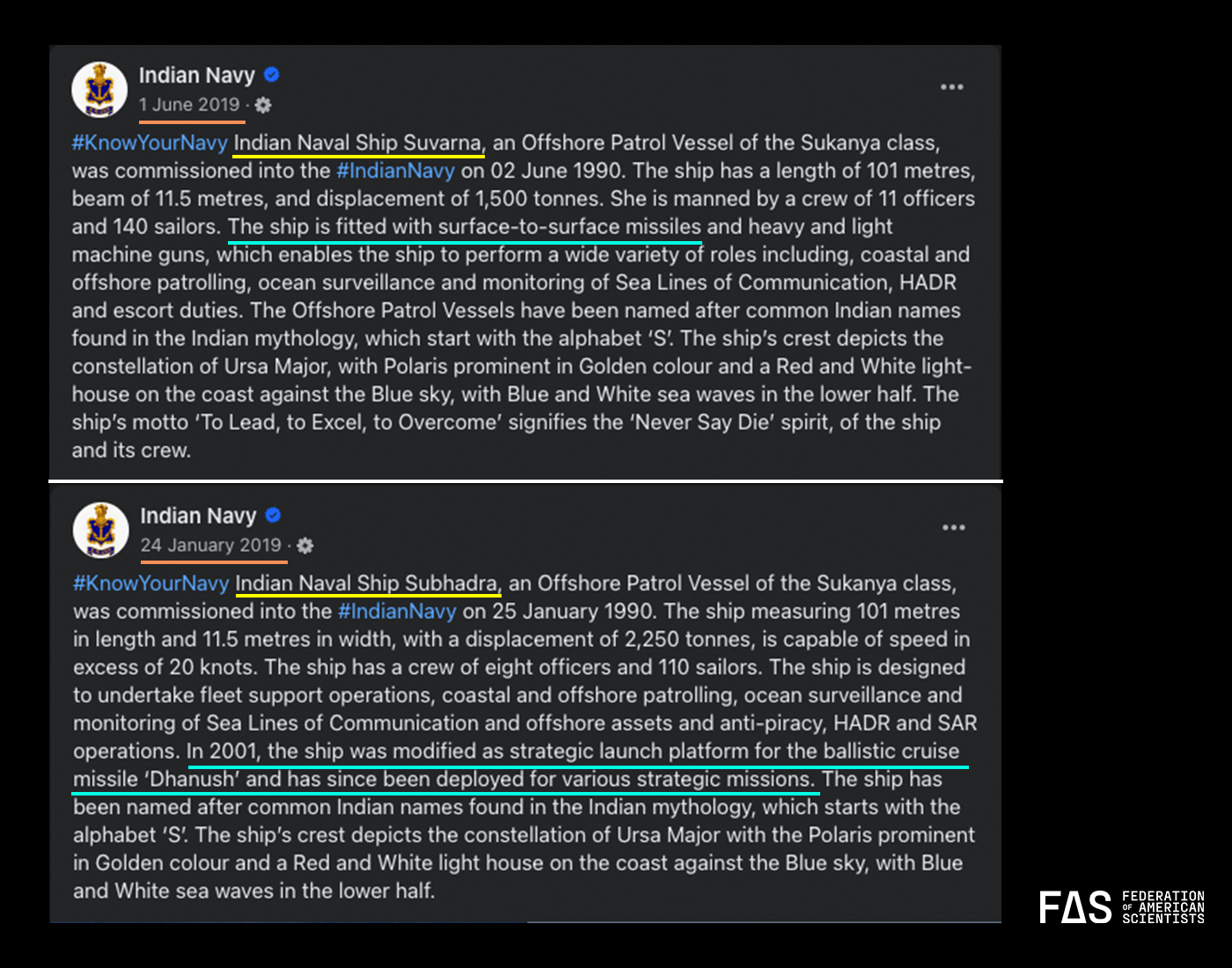
In December 2021, satellite imagery from Airbus showed two Sukanya-class vessels at Naval Base Karwar, one with missile stabilizers and the other without. The vessel without stabilizers also featured new aft deck markings in a cross pattern that had not been seen before on other vessels of that class. Without additional images, it was unclear whether the vessel featuring the new markings was one of the two nuclear-capable ships or another ship in the Sukanya-class that is also home-ported at Karwar––INS Sukanya (P50). If the vessel without stabilizers was the INS Sukanya, then the markings on the ship would not have necessarily indicated any change to the nuclear mission, since INS Sukanya had never been equipped with missile stabilizers. If the new pattern belonged to one of the two vessels that had previously been equipped with those stabilizers, however, then it would indicate that those stabilizers had been removed, thus likely eliminating that vessel’s nuclear strike role and removing the Dhanush missile from combat duty.
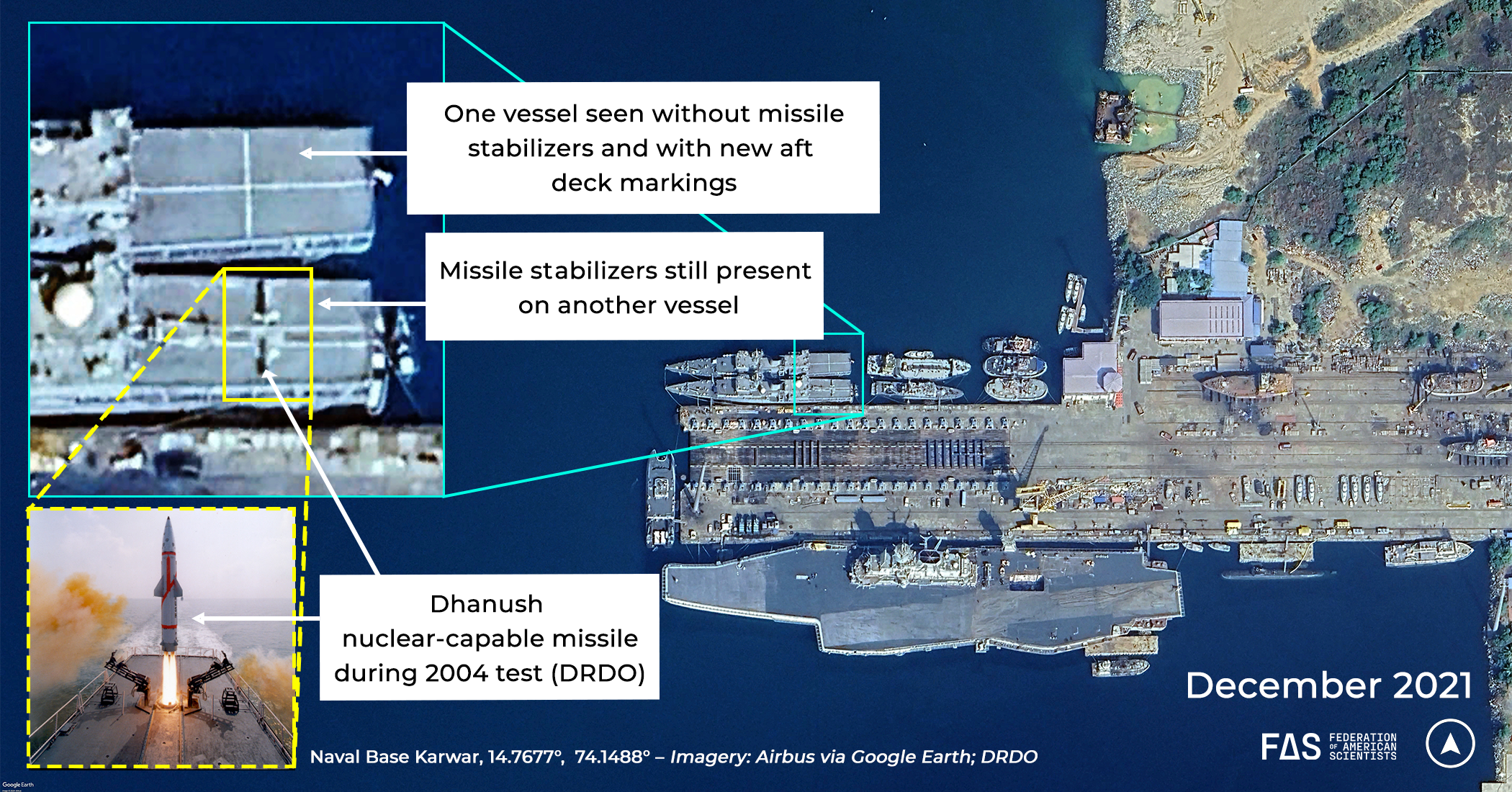
Clarity arrived through a strange medium: a series of yoga-related Instagram posts published by India’s public broadcaster during port visits to Seychelles in October 2022, indicating that the vessel with the new deck markings was indeed INS Suvarna. This meant that as of December 2021 at the latest, the missile stabilizers on INS Suvarna had been removed, meaning that the vessel has since been unable to launch nuclear-capable Dhanush ballistic missiles.

At the exact same time that the crew of INS Suvarna was practicing yoga in Seychelles, another satellite image captured by Maxar Technologies showed another Sukanya-class patrol vessel at Naval Base Karwar with its aft deck under construction. Similarly to the previous case, it remained unclear whether this vessel was the nuclear-capable INS Subhadra or the non-nuclear INS Sukanya. A subsequent satellite image in April 2023 indicated that the aft deck had been repainted with a new cross pattern with a circle––likely to be used as a helipad.
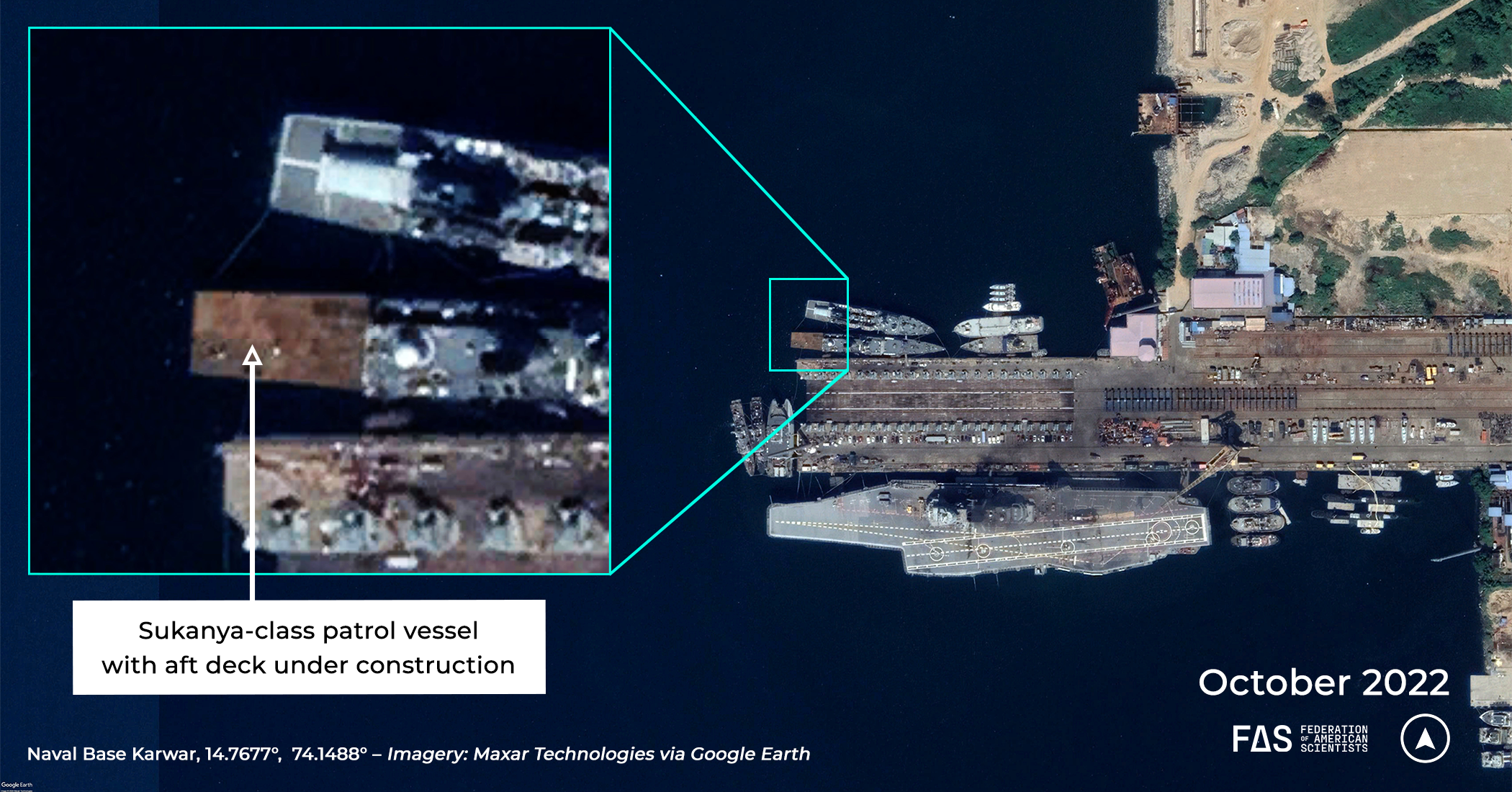
This same unique deck pattern was then on full display at another yoga session in Seychelles, during a port visit by INS Subhadra in February 2024. This indicates that this vessel lost its ability to deliver nuclear-capable Dhanush missiles when its aft deck began construction around October 2022.

Since then, neither vessel has been seen with its missile stabilizer platforms returned to the aft deck, suggesting that the nuclear-capable Dhanush has finally been removed from active service and that the nuclear strike mission for the Sukanya-class patrol vessels has likely been retired. Given that the Dhanush is a close variant of India’s land-based Prithvi SRBM, it is likely that the Dhanush’s associated warheads have not been dismantled, but instead have been returned to India’s stockpile for use by these short-range systems.
—
Although the yoga-related source of the news may have been surprising, the Dhanush missile’s retirement in itself was not. For years, we have assumed that the system would be eliminated once India’s sea-based deterrent reached a higher level of maturity. That time appears to be now: after years of delays, India’s second ballistic missile submarine––INS Arighat––is expected to be commissioned into the Navy before the end of 2024. Two more ballistic missile submarines are expected to follow over the course of this decade, and satellite imagery indicates that they will be able to carry double the number of missiles as India’s first two submarines.
More details on these developments, as well as other elements of India’s evolving nuclear arsenal, will be available in our forthcoming September publication: Indian Nuclear Weapons, 2024, in the Bulletin of the Atomic Scientists.
This research was carried out with generous contributions from the Carnegie Corporation of New York, the Jubitz Foundation, the New-Land Foundation, Ploughshares, the Prospect Hill Foundation, and individual donors.
This report outlines a framework relying on “Cooperative Technical Means” for effective arms control verification based on remote sensing, avoiding on-site inspections but maintaining a level of transparency that allows for immediate detection of changes in nuclear posture or a significant build-up above agreed limits.
The grant comes from the Carnegie Corporation of New York (CCNY) to investigate, alongside The British American Security Information Council (BASIC), the associated impact on nuclear stability.
Satellite imagery of RAF Lakenheath reveals new construction of a security perimeter around ten protective aircraft shelters in the designated nuclear area, the latest measure in a series of upgrades as the base prepares for the ability to store U.S. nuclear weapons.
It will take consistent leadership and action to navigate the complex dangers in the region and to avoid what many analysts considered to be an increasingly possible outcome, a nuclear conflict in East Asia.